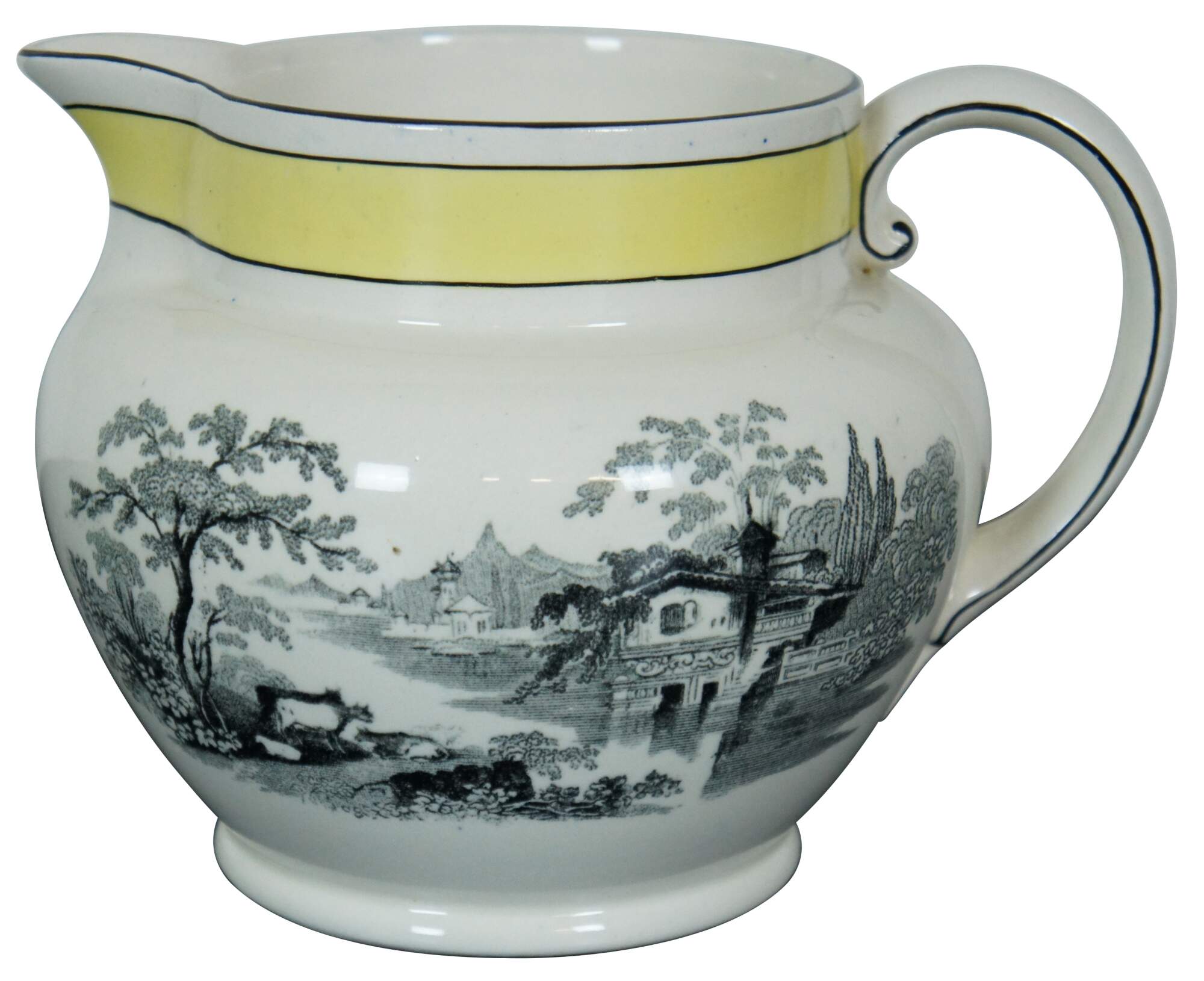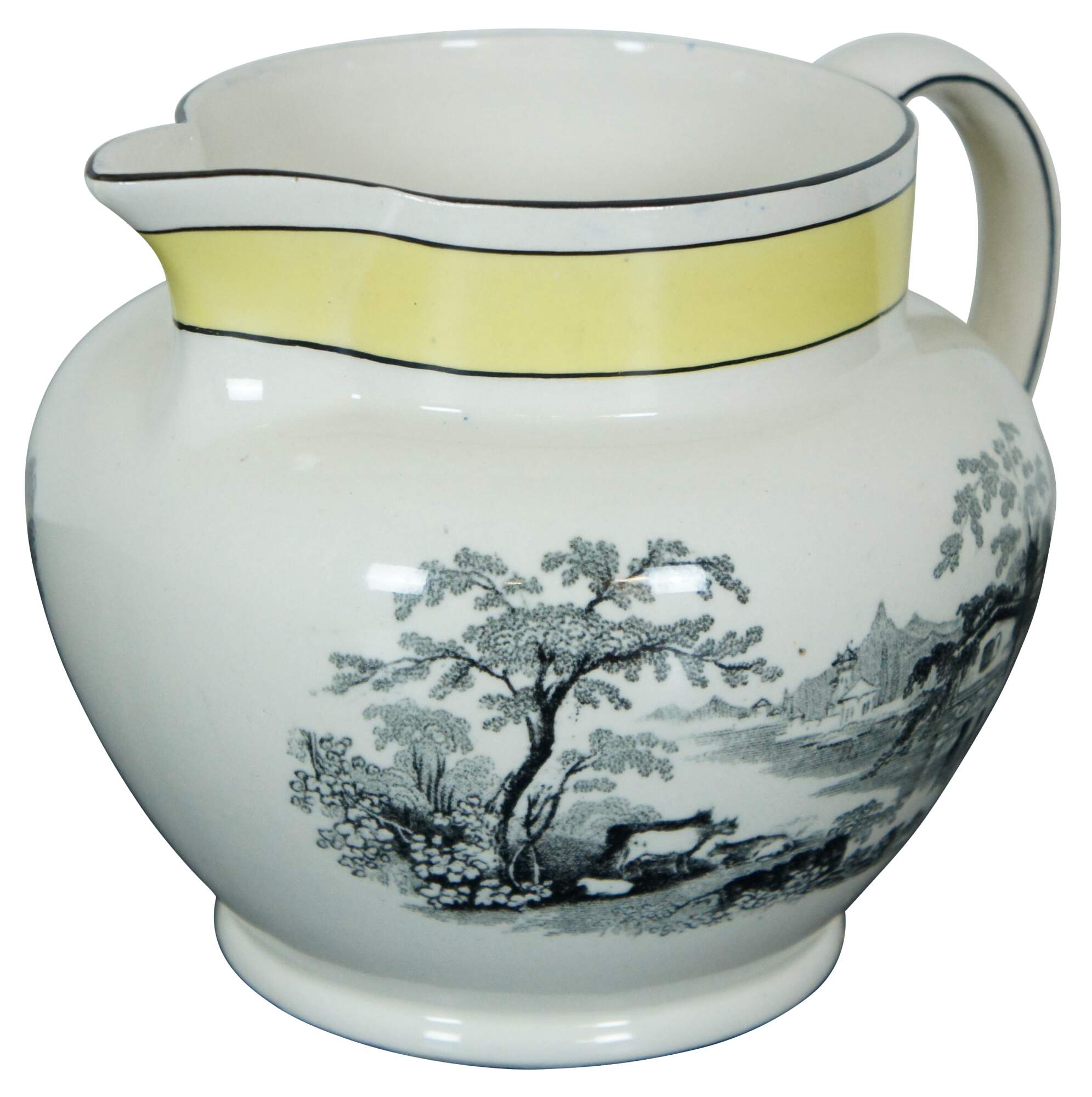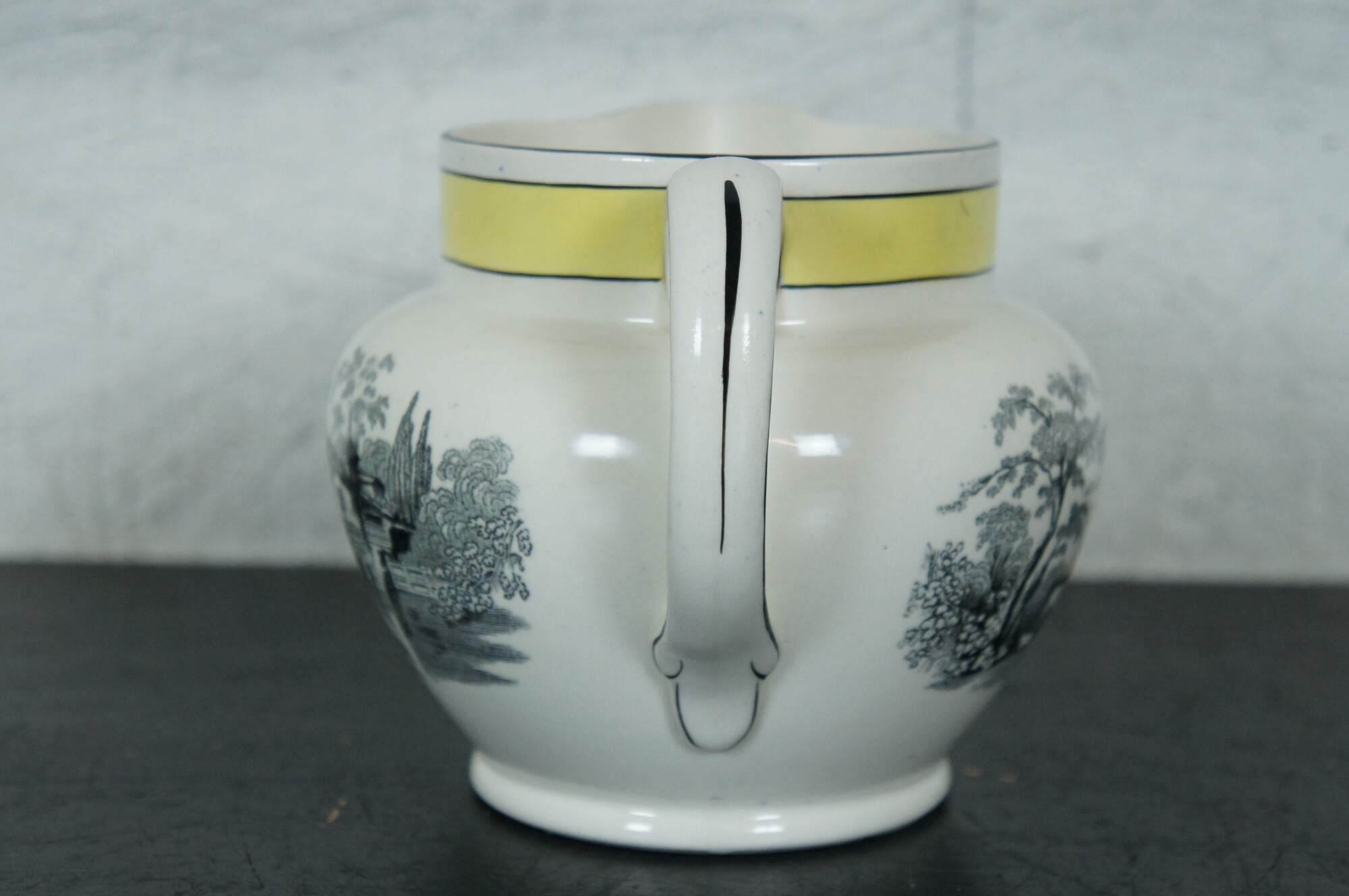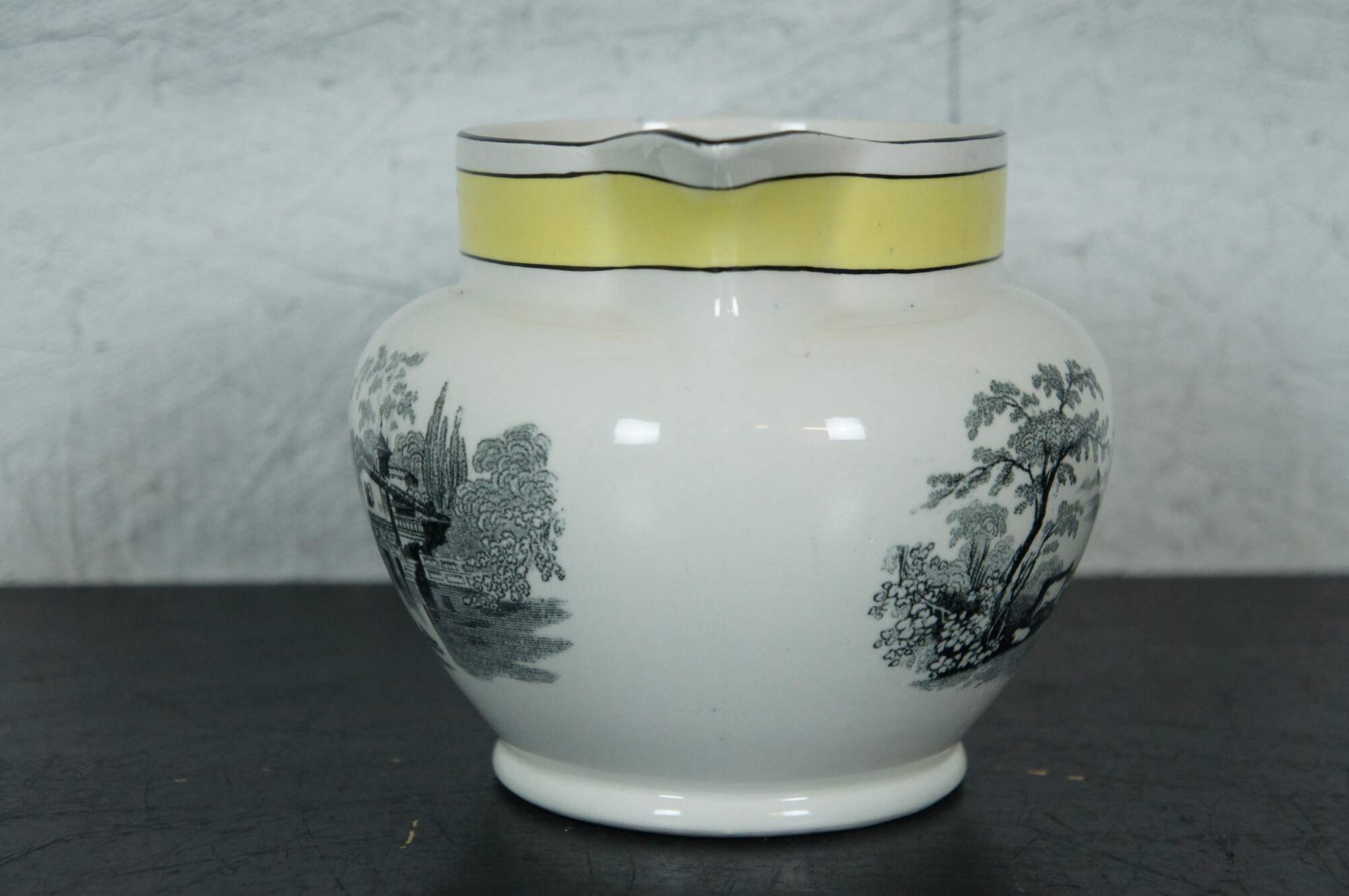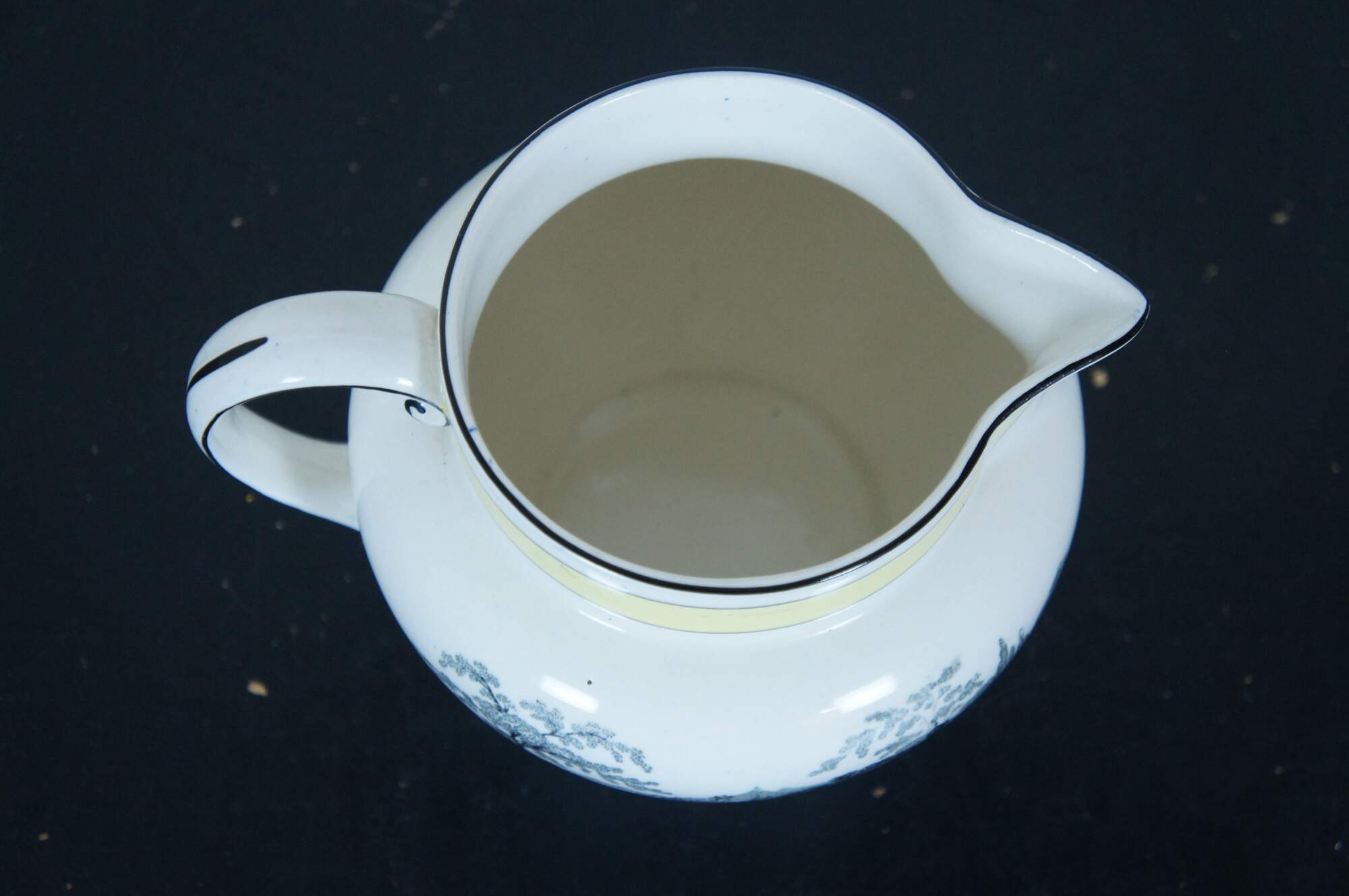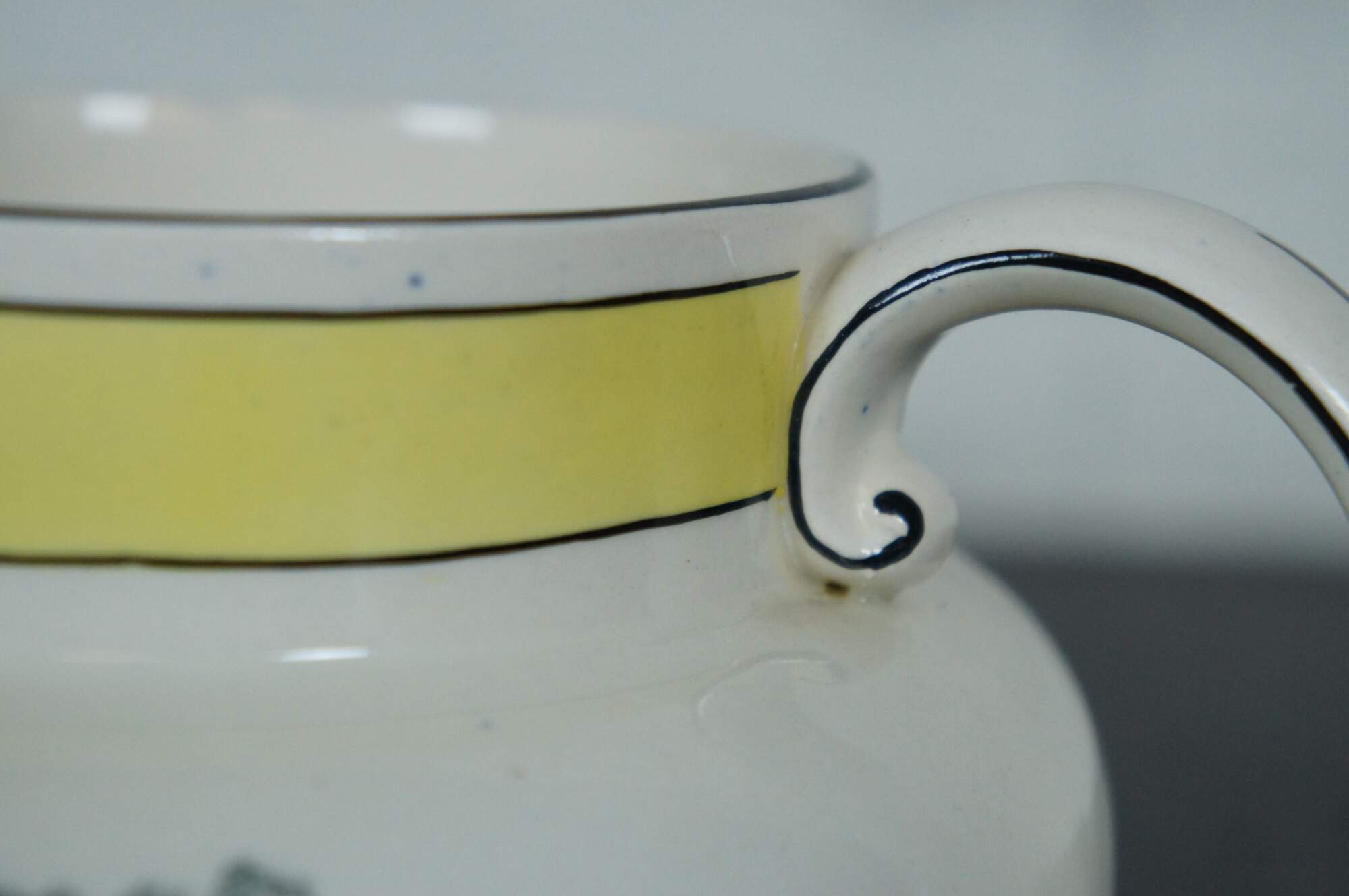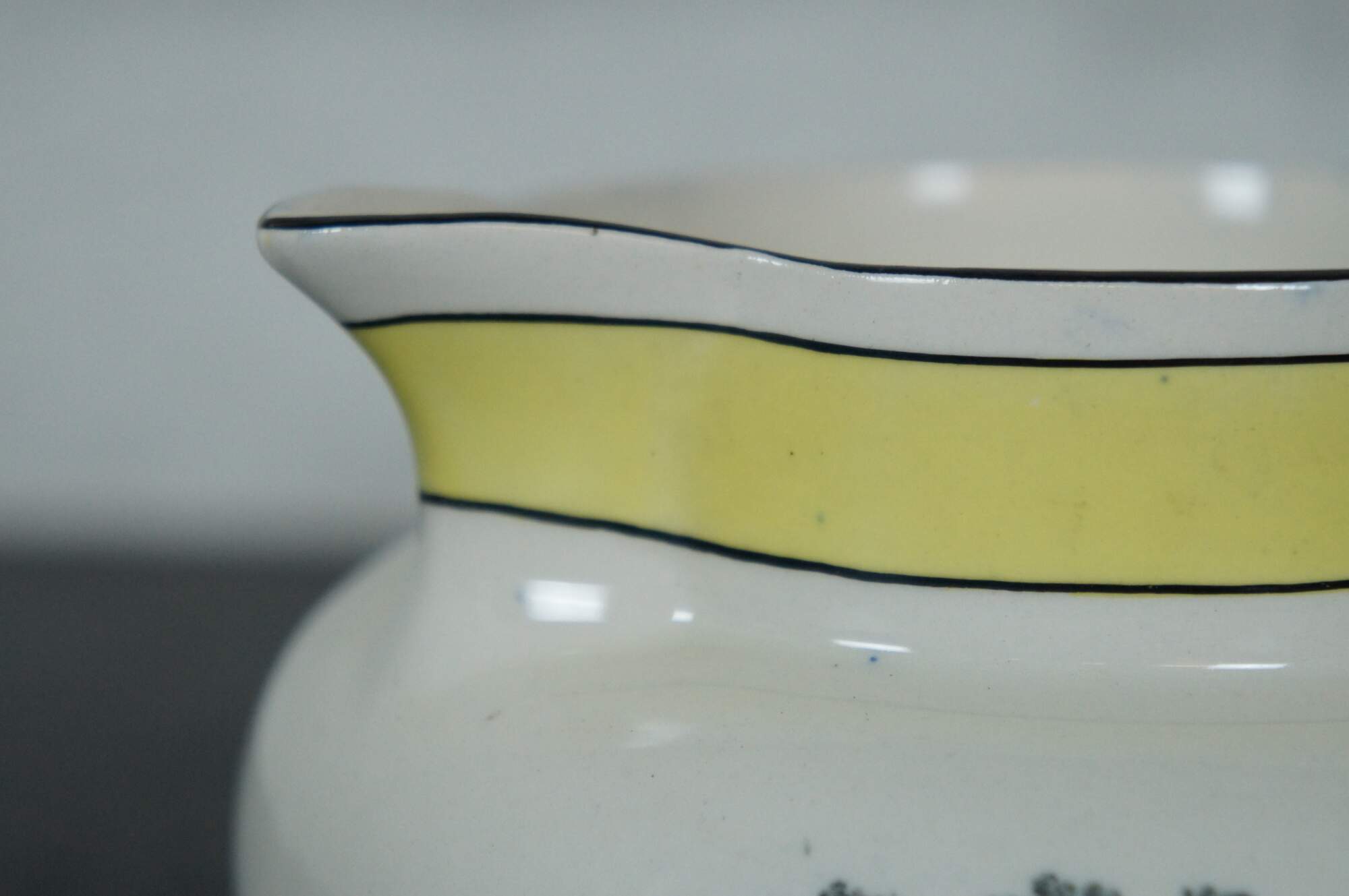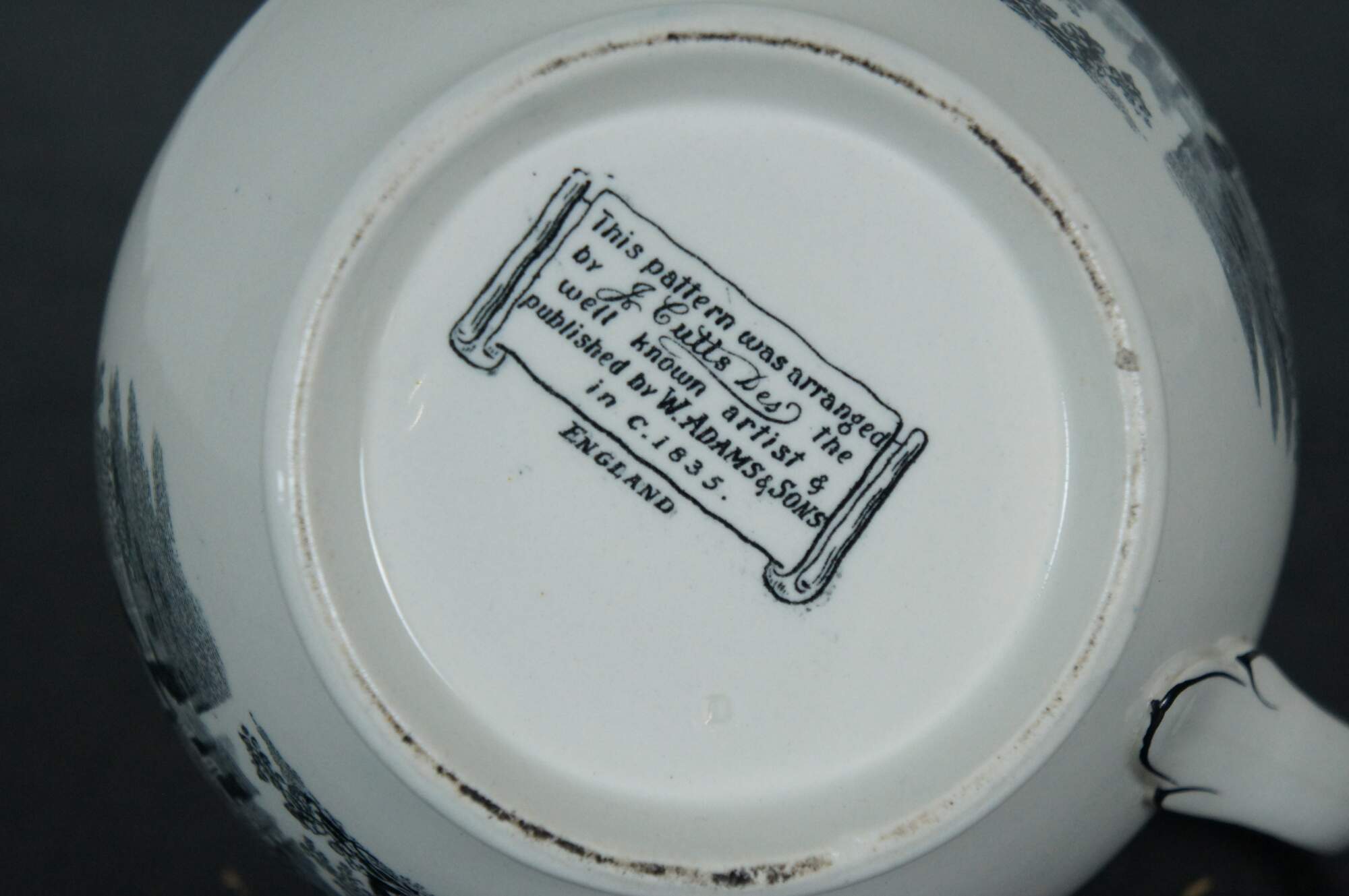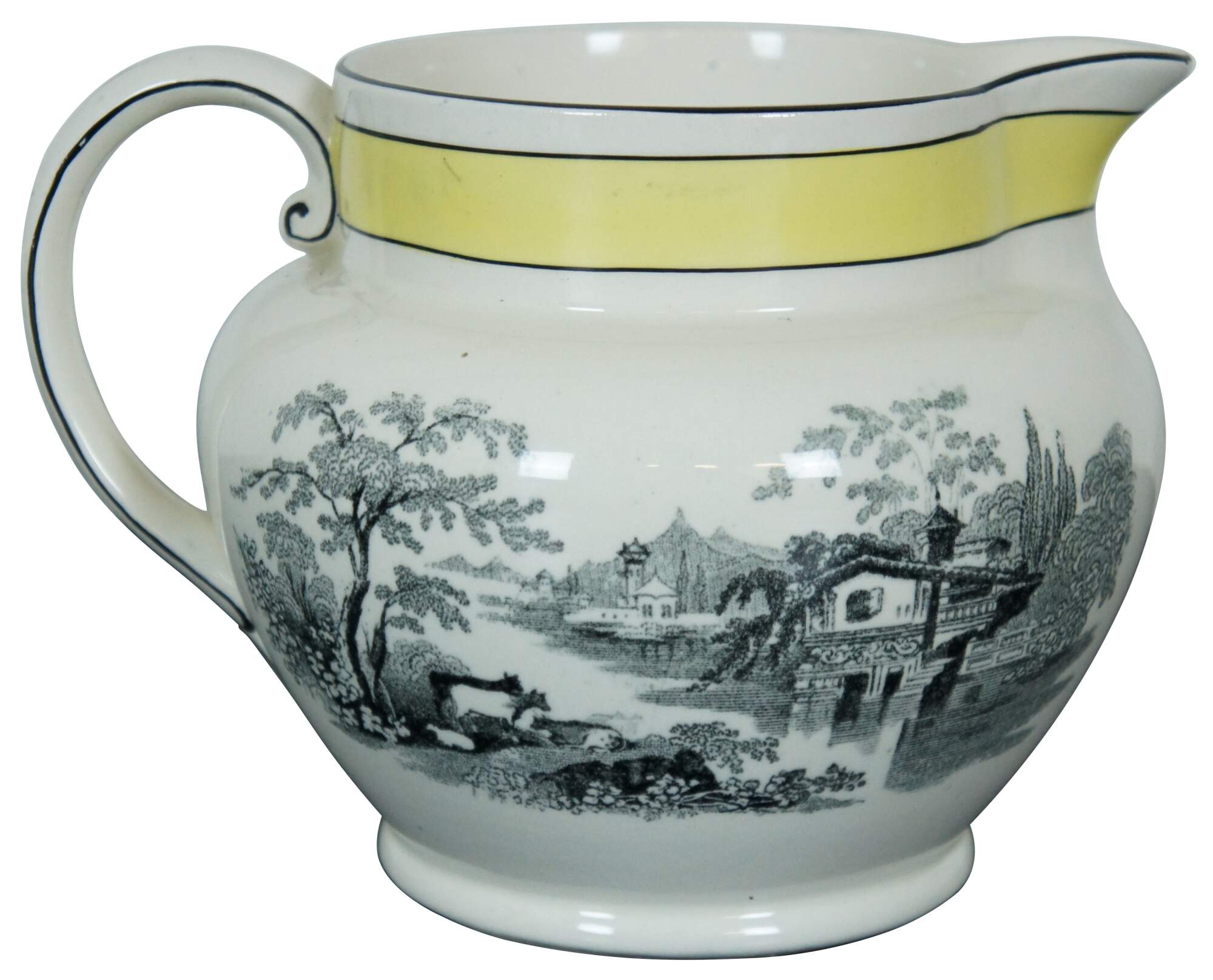
Antique English Staffordshire Transferware Serving Creamer Jug Pitcher 7"
Sold
Shipping:
Free Shipping Included
Delivery:
Estimated 2-15 Business Days
Payments:
Credit Card, Check, Cash, PayPal, Apple Pay, Venmo
Returns:
30 Days 100% Money Back Guarantee, Buyer Pays Return Shipping
Description
Antique 20th century Staffordshire transferware porcelain jug or pitcher featuring an English landscape in black, originally designed by James Cutts for W. Adams & Sons, and a yellow border around the upper edge. “James Cutts was born in 1808 in Pinxton, Derbyshire, he was the 9th of 10 children and the youngest of five boys. His father, John Cutts, was a moderately gifted china painter, trained at the Derby porcelain works, who moved to become manager of the Pinxton porcelain factory. Sometime after 1803, John Cutts took over the Pinxton works after which date the factory may have concentrated on decorating. In 1813 the business closed and the Cutts family headed for North Staffordshire where John Cutts was employed by the Wedgwood company. In 1816 he left Wedgwood and started up his own business as an enameller. James, as an engraver, took a different artistic path and where he trained is not known, and although the Davenport factory has been suggested, there is no supporting evidence. It seems likely that he had established himself by 1830 for in that year he married, and by 1834 he is documented in White’s Directory of 18342. It is known that he did work for several potters. Dishes produced by William Adams & Co. in the 20th century, carries a mark on the back which states This pattern was arranged by J. Cutts Des. The well known artist & published by W. Adams & Sons in c. 1853. The wording suggests that even many years later in the 20th century Cutts was well respected and renowned enough to be a recognizable asset in marketing the product.” “Several branches of the Adams family operated factories in the Staffordshire Potteries in the latter half of the 18th and early part of the 19th centuries, including three men named William Adams, who have come to be known as William Adams I, II and III. [i]
William Adams I (1746-1805) was born within weeks of his father’s death and inherited a potworks at St John’s Square, Burslem. His mother died before he was one year old and he was raised by his grandfather who managed the factory until William came of age. By 1779 he was also potting at the Greengates Works in Tunstall: by 1786 Greengates had been enlarged and a third factory acquired at Newfield, Tunstall. William Adams I was an accomplished potter whose best known products included stonewares, jasper and basalt of the highest quality. Pieces are recorded impressed ‘ADAMS’ and ‘ADAMS & CO’. At his death in 1805, his son Benjamin was still a minor and it is said that the business was carried on by his elder sister Mary until Benjamin took over the works on attaining his majority in 1809. Amongst his recorded output are stonewares and blue printed earthenwares impressed ‘B. ADAMS’. The marked blue printed wares are of a light blue tone and none feature American subjects. The firm encountered financial difficulties and closed in 1820, the Greengates factory being acquired by John Meir.
William Adams II (1748-1831) of the Brick House Works Cobridge was a minor when his father died: during his minority the pottery was let to Josiah Wedgwood during which time it was known as the Bell Works. William Adams II took over the pottery when he attained majority in 1769, Wedgwood then moving to the newly built Etruria. During his potting career, this William owned or occupied several factories both alone and in partnership with others, but no marked ware of his manufacture has ever been identified.
William Adams III of Fenton Hall and Bagnall (1772 -1829.), was the son of Richard Adams of Cobridge (1739-1811) and was the founder of the firm whose products are featured on this site. Having been in an earlier partnership for some years, William III set up on his own account at Cliff Bank, Stoke in 1804, where he manufactured general earthenware including blue printed pottery. William III had four sons: from 1819 onwards he successively took his sons into partnership and the business was extended to a very large size, by the mid-19th century occupying no less than six factories, both at Stoke and Tunstall. It is written that William, son of William Adams III had travelled to America and established a business in New York in the name of Adams Brothers. This is difficult to confirm, but John Ridgway noted meeting Mr Adams of Stoke when he was in New York in November, 1822[ii]. The firm had an extensive American trade and the letters of Matthew Smith, the Baltimore importer, to his Liverpool agents contain several references to his dealings with them”
Condition
Good Overall - Gentle wear/spots
Dimensions
7.25” x 6” x 5.25” (Width x Depth x Height)
